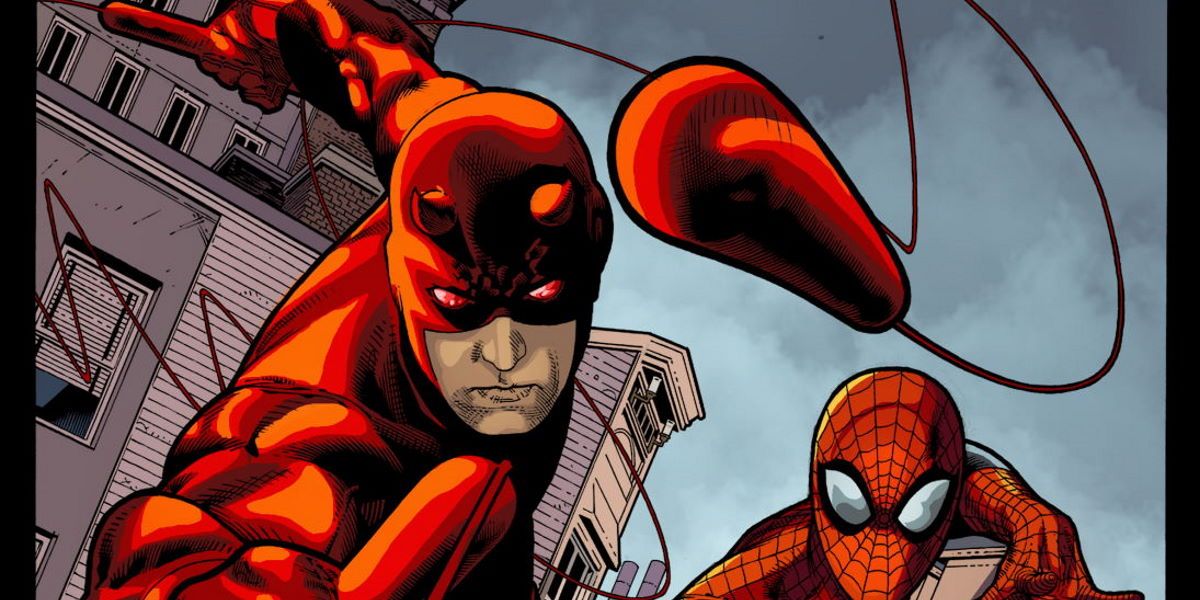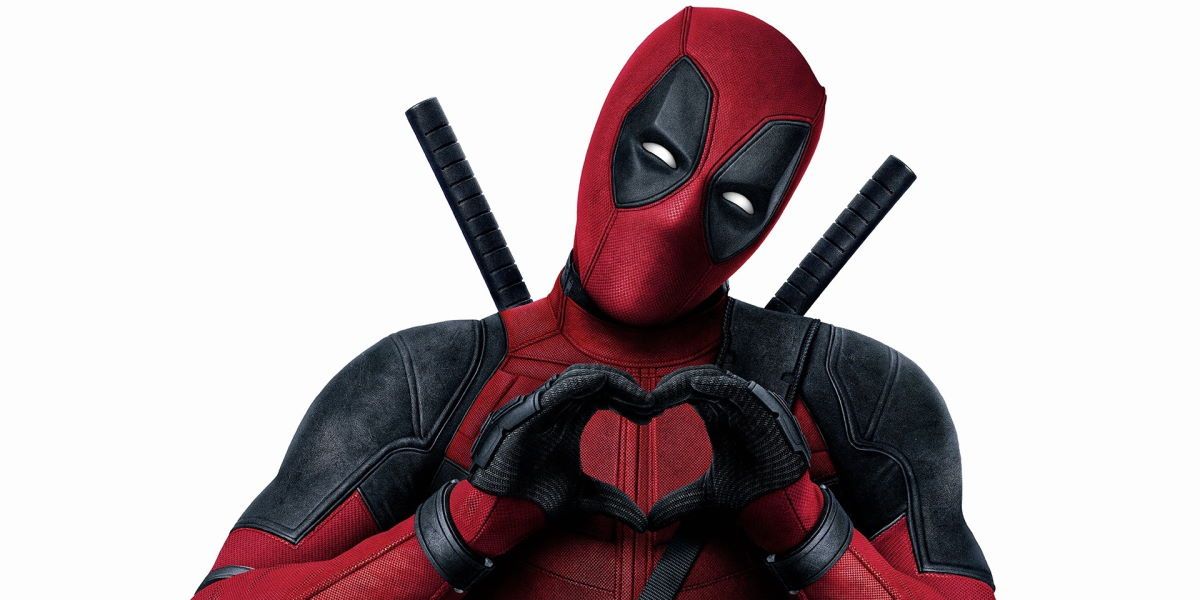“)),[e.width,e.height]=g[o.size_id].split(“x”).map((e=>Number(e)))),e.rubiconTargeting=(Array.isArray(o.targeting)?o.targeting:[]).reduce(((e,t)=>(e[t.key]=t.values[0],e)),{rpfl_elemid:s.adUnitCode}),t.push(e)}else(0,r.logError)(“Rubicon: bidRequest undefined at index position:”.concat(n),i,e);var p,u;return t}),[]).sort(((e,t)=>(t.cpm||0)-(e.cpm||0)))},getUserSyncs:function(e,t,i,o){if(!C&&e.iframeEnabled){let e={};return i&&(“boolean”==typeof i.gdprApplies&&(e.gdpr=Number(i.gdprApplies)),”string”==typeof i.consentString&&(e.gdpr_consent=i.consentString)),o&&(e.us_privacy=encodeURIComponent(o)),e=Object.keys(e).length?”?”.concat((0,r.formatQS)(e)):””,C=!0,{type:”iframe”,url:”https://”.concat(m.syncHost||”eus”,”.rubiconproject.com/usync.html”)+e}}},transformBidParams:function(e,t){return(0,r.convertTypes)({accountId:”number”,siteId:”number”,zoneId:”number”},e)}};function x(e,t){let i;return i=e.params.referrer?e.params.referrer:t.refererInfo.page,e.params.secure?i.replace(/^http:/i,”https:”):i}function b(e){const t=document.getElementById(e.adUnitCode);!function(e){const t=e.querySelector(“div[id^=’google_ads’]”);t&&t.style.setProperty(“display”,”none”)}(t),function(e){const t=e.querySelector(“script[id^=’sas_script’]”),i=t&&t.nextSibling;i&&”iframe”===i.localName&&i.style.setProperty(“display”,”none”)}(t);const i=e.renderer.getConfig();e.renderer.push((()=>{window.MagniteApex.renderAd({width:e.width,height:e.height,vastUrl:e.vastUrl,placement:{attachTo:t,align:i.align||”center”,position:i.position||”append”},closeButton:i.closeButton||!1,label:i.label||void 0,collapse:i.collapse||!0})}))}function y(e,t){let i=e.params;if(“video”===t){let t=[];return i.video&&i.video.playerWidth&&i.video.playerHeight?t=[i.video.playerWidth,i.video.playerHeight]:Array.isArray((0,o.Z)(e,”mediaTypes.video.playerSize”))&&1===e.mediaTypes.video.playerSize.length?t=e.mediaTypes.video.playerSize[0]:Array.isArray(e.sizes)&&e.sizes.length>0&&Array.isArray(e.sizes[0])&&e.sizes[0].length>1&&(t=e.sizes[0]),t}let n=[];return Array.isArray(i.sizes)?n=i.sizes:void 0!==(0,o.Z)(e,”mediaTypes.banner.sizes”)?n=h(e.mediaTypes.banner.sizes):Array.isArray(e.sizes)&&e.sizes.length>0?n=h(e.sizes):(0,r.logWarn)(“Rubicon: no sizes are setup or found”),function(e){const t=[15,2,9];return e.sort(((e,i)=>{const r=t.indexOf(e),o=t.indexOf(i);return r>-1||o>-1?-1===r?1:-1===o?-1:r-o:e-i}))}(n)}function v(e,t,i){const n={user:{ext:{data:{…e.params.visitor}}},site:{ext:{data:{…e.params.inventory}}}};e.params.keywords&&(n.site.keywords=(0,r.isArray)(e.params.keywords)?e.params.keywords.join(“,”):e.params.keywords);let a=(0,r.mergeDeep)({},e.ortb2||{},n),s=(0,o.Z)(e.ortb2Imp,”ext”)||{},c=(0,o.Z)(e.ortb2Imp,”ext.data”)||{};const p=(0,o.Z)(e,”ortb2Imp.ext.gpid”),u={user:[4],site:[1,2,5,6]},l={user:”tg_v.”,site:”tg_i.”,adserver:”tg_i.dfp_ad_unit_code”,pbadslot:”tg_i.pbadslot”,keywords:”kw”},m=function(e,t,n){let a=!(arguments.length>3&&void 0!==arguments[3])||arguments[3],s=function(e,t,i){return”data”===t&&Array.isArray(e)?e.filter((e=>e.segment&&(0,o.Z)(e,”ext.segtax”)&&u[i]&&-1!==u[i].indexOf((0,o.Z)(e,”ext.segtax”)))).map((e=>{let t=e.segment.filter((e=>e.id)).reduce(((e,t)=>(e.push(t.id),e)),[]);if(t.length>0)return t.toString()})).toString():”object”==typeof e&&!Array.isArray(e)||void 0===e?void 0:Array.isArray(e)?e.filter((e=>{if(“object”!=typeof e&&void 0!==e)return e.toString();(0,r.logWarn)(“Rubicon: Filtered value: “,e,”for key”,t,”: Expected value to be string, integer, or an array of strings/ints”)})).toString():e.toString()}(e,n,t),d=l[n]&&a?””.concat(l[n]):”data”===n?””.concat(l[t],”iab”):””.concat(l[t]).concat(n);i[d]=i[d]?i[d].concat(“,”,s):s};t===d.Mk?([“site”,”user”].forEach((e=>{Object.keys(a[e]).forEach((t=>{“site”===e&&”content”===t&&a[e][t].data?m(a[e][t].data,e,”data”):”ext”!==t?m(a[e][t],e,t):a[e][t].data&&Object.keys(a[e].ext.data).forEach((t=>{m(a[e].ext.data[t],e,t,!1)}))}))})),Object.keys(c).forEach((e=>{“adserver”!==e?m(c[e],”site”,e):”gam”===c[e].name&&m(c[e].adslot,name,e)})),p&&(i.p_gpid=p),i[“tg_i.pbadslot”]&&delete i[“tg_i.dfp_ad_unit_code”]):(Object.keys(s).length&&(0,r.mergeDeep)(i.imp[0].ext,s),p&&(i.imp[0].ext.gpid=p),(0,r.mergeDeep)(i,a))}function h(e){return(0,r.parseSizesInput)(e).reduce(((e,t)=>{let i=parseInt(g[t],10);return i&&e.push(i),e}),[])}function _(e){let t=arguments.length>1&&void 0!==arguments[1]&&arguments[1];return function(e){let t=void 0!==(0,o.Z)(e,”mediaTypes.”.concat(d.pX)),i=void 0!==(0,o.Z)(e,”mediaTypes.”.concat(d.Mk)),r=”object”!=typeof(0,o.Z)(e,”params.video”);return i&&r&&(t=!1),t&&r&&(0,n.N)(e,”params.video”,{}),t}(e)?-1===[“outstream”,”instream”].indexOf((0,o.Z)(e,”mediaTypes.”.concat(d.pX,”.context”)))?void(t&&(0,r.logError)(“Rubicon: mediaTypes.video.context must be outstream or instream”)):y(e,”video”).length<2?void(t&&(0,r.logError)(“Rubicon: could not determine the playerSize of the video”)):(t&&(0,r.logMessage)(“Rubicon: making video request for adUnit”,e.adUnitCode),”video”):0===y(e,”banner”).length?void(t&&(0,r.logError)(“Rubicon: could not determine the sizes for banner request”)):(t&&(0,r.logMessage)(“Rubicon: making banner request for adUnit”,e.adUnitCode),”banner”)}function j(e){let t=!1;const i=[“asi”,”sid”,”hp”];return e.nodes?(t=e.nodes.reduce(((e,t)=>e?i.every((e=>t.hasOwnProperty(e))):e),!0),t||(0,r.logError)(“Rubicon: required schain params missing”),t):t}function k(e,t){return”rp_schain”===e?”rp_schain=”.concat(t):””.concat(e,”=”).concat(encodeURIComponent(t))}var C=!1;(0,a.dX)(f),window.pbjs.installedModules.push(“rubiconBidAdapter”)}},e=>{e.O(0,[6866],(()=>{return t=40060,e(e.s=t);var t}));e.O()}]); (self.pbjsChunk=self.pbjsChunk||[]).push([[2972],{54834:(o,e,t)=>{var n=t(64358),i=t(92797),r=t(51039),d=t(15164),a=t(34516);const u=(0,d.df)({moduleName:”pubCommonId”,gvlid:a.$P}),c=”cookie”,l=”html5″,s=”_pubcid_optout”,f=”PublisherCommonId”;function m(o,e){if(e===c)return u.getCookie(o);if(e===l&&u.hasLocalStorage()){const e=u.getDataFromLocalStorage(“”.concat(o,”_exp”));if(!e)return u.getDataFromLocalStorage(o);if(new Date(e).getTime()-Date.now()>0)return u.getDataFromLocalStorage(o)}}function g(o,e){return function(t){“function”==typeof e&&e(),t(o)}}function p(o){let e=arguments.length>1&&void 0!==arguments[1]?arguments[1]:””;if(!o)return;const t=(0,n.parseUrl)(o);t.search.id=encodeURIComponent(“pubcid:”+e);const i=(0,n.buildUrl)(t);return function(){(0,n.triggerPixel)(i)}}function I(){return!!(u.cookiesAreEnabled()&&m(s,c)||u.hasLocalStorage()&&m(s,l))}const v={name:”sharedId”,aliasName:”pubCommonId”,gvlid:a.$P,decode(o,e){if(I())return void(0,n.logInfo)(“PubCommonId decode: Has opted-out”);(0,n.logInfo)(” Decoded value PubCommonId “+o);return{pubcid:o}},getId:function(){let o=arguments.length>0&&void 0!==arguments[0]?arguments[0]:{},e=arguments.length>2?arguments[2]:void 0;if(I())return void(0,n.logInfo)(“PubCommonId: Has opted-out”);if(r.VP.getCoppa())return void(0,n.logInfo)(“PubCommonId: IDs not provided for coppa requests, exiting PubCommonId”);const{params:{create:t=!0,pixelUrl:i}={}}=o;let d=e;if(!d){try{“object”==typeof window[f]&&(d=window[f].getId())}catch(o){}d||(d=t&&(0,n.hasDeviceAccess)()?(0,n.generateUUID)():void 0)}return{id:d,callback:g(d,p(i,d))}},extendId:function(){let o=arguments.length>0&&void 0!==arguments[0]?arguments[0]:{},e=arguments.length>2?arguments[2]:void 0;if(I())return(0,n.logInfo)(“PubCommonId: Has opted-out”),{id:void 0};if(r.VP.getCoppa())return void(0,n.logInfo)(“PubCommonId: IDs not provided for coppa requests, exiting PubCommonId”);const{params:{extend:t=!1,pixelUrl:i}={}}=o;if(t){if(i){return{callback:p(i,e)}}return{id:e}}},domainOverride:function(){const o=document.domain.split(“.”),e=”_gd”.concat(Date.now());for(let t,n,i=0;i
Stan “The Man” Lee loved giving his heroes nicknames. Working with Marvel’s best creators, he helped craft the company’s most iconic nicknames.
The incomparable Stan Lee had a knack for giving people fantastic nicknames. In addition to naming members of his own staff — including Jack “King” Kirby and “Smilin’ Steve Ditko — Stan loved giving Marvel superheroes nicknames, often coining multiple monikers that stuck for years.
This habit apparently rubbed off on later Marvel comic book creators, who continued giving their iterations of superheroes catchy nicknames. A great nickname stands the tests of time and these monikers sum up their heroic subjects brilliantly.
Updated on June 29th by Sage Ashford: Marvel’s habit of giving nicknames is one way they could humanize their characters and make readers feel closer to them. Eager to have readers relate to their characters, many Marvel superheroes have had nicknames that are still relevant today.
15 Doctor Strange
Master of the Mystic Arts
Like many comic book heroes from the ’60s, Doctor Stephen Strange wasn’t introduced to readers in his own comic book. Instead, he had to share an anthology comic like many heroes, in a book aptly titled, Strange Tales. There, readers were introduced to the Sorcerer Supreme and the magical corner of the Marvel Universe for the first time.
Even as early as Doctor Strange’s second appearance, the creators had already developed a nickname for him: the Master of the Mystic Arts. At first something he was only called by narration, eventually other characters began referring to the secretive Doctor Strange by the same title.
14 Wolfsbane
Firetop
Rahne Sinclair, or Wolfsbane, was one of the founding members of the first official “next generation” of X-Men, the New Mutants. An innocent girl whose powers happened to stem from lycanthropy, she quickly became another standout X-Men. She also played a major role in both X-Factor and X-Force at different times in her life.
Rahne has a number of nicknames, but Chris Claremont’s earliest ones all center on her bright-red hair. “Firetop” is the nickname that stuck around the most, but she’s also been known as “Carrot Top,” and simply “Red,” though she’s never been a fan of any name other than her own.
13 Captain Britain
Betsy
Elizabeth Braddock has been a key member of multiple superhero teams in the past, from X-Men to the multiverse-hopping Exiles to the British super-team Excalibur. In that time, she’s been the psychic ninja of the X-Men Psylocke, and lately she’s become a member of the illustrious Captain Britain Corps. However, that entire time she’s always had the same nickname: “Betsy.”
Though some members of the X-Men might occasionally call Elizabeth Braddock “Betts,” she’s been “Betsy” to both her friends and family since the very beginning. Considering her superhero codename has shifted several times, it’s no wonder readers and characters alike have stuck with the nickname.
12 Gambit
Cajun
Part of the Thieves Guild before joining up with the X-Men, Gambit took some time to warm up to his new team. It didn’t take long for him to develop a nickname though, courtesy of Wolverine. Logan chose to refer to Gambit as the “Cajun,” referencing Gambit’s New Orleans roots.
Later still, Gambit’s romantic partner Rogue would come to playfully refer to him as Swamp Rat, though that name never had the same staying power. Over the years, writers outside of Gambit’s creator, Chris Claremont, would come to embrace the nickname as well. Gambit is frequently referred to both by fans and creators as “the Ragin’ Cajun.”
11 Ant-Man
High-Pockets
One of the founding members of the Avengers, Hank Pym was a key scientist who helped push super-science forward in the Marvel Universe. Responsible for discovering “Pym Particles,” Hank mastered not only shrinking but the ability to grow with his particles as well. For all his work, though, Hank was rewarded by his then-girlfriend Janet Van Dyne with the nickname “High Pockets.”
Something of an insult during the ’60s, the nickname referred to an older generation of men known for wearing high-waisted pants. In Janet’s case, it was meant to tease her boyfriend for being overly serious about his work as a scientist and as a superhero.
10 Hulk
The Green Goliath
As the story goes, the Incredible Hulk was originally grey in the comics, but a printing error made the coloring inconsistent from panel to panel. As a result, the Hulk was colored green in his next issue, which became his go-to color palette.
Stan Lee enjoyed this change, as it left the door open to a bunch of fun nicknames for the Hulk, including “Jade Jaws,” “Ol’ Greenskin,” and “The Jolly Green Goliath,” and his most iconic name, “The Green Goliath.” Later, when the Grey Hulk returned, some writers coined the nickname “Grey Goliath” but it never seemed as catchy.
9 Spider-Man
Spidey
It’s very possible that few Marvel superheroes have as many well-known nicknames as Spider-Man. Both fans and comic book characters frequently refer to Spider-Man as “Spidey.” Many others have referred to him as “Wall Crawler,” “Web Spinner,” “Webslinger,” “Web Head,” and of course, “Your Friendly Neighborhood Spider-Man.”
Artist Steve Ditko’s original creepy depictions of Spider-Man and Spidey’s costume design likely led to many of these names, which have lasted for almost sixty years. Notably, people have tried giving Spider-Man new nicknames (Tony Stark playfully referred to Peter Parker as “Spider-Boy” and “Spiderling” in Captain America: Civil War), but none of them have stuck. It just goes to show that sometimes the classics are the best.
8 Thor
Goldilocks
Thor was already a god in Norse mythology before Stan Lee appropriated the Thunder God as one of his new Marvel heroes. However, the Marvel version of Thor became a popular pop culture icon in his own right. Thor frequently refers to himself by the title “Odinson” in the MCU movies.
Way back in The Avengers #66, however, writer Roy Thomas had Hawkeye call Thor “Goldilocks” as a reference to the Thunder God’s long blond hair. Thor’s hair resembled the longer hair-dos from back in the 1960s, so the name stuck, at least in the comics.
7 Wolverine
Canucklehead
Wolverine famously is one of the few Marvel characters who didn’t reveal his true name until decades after his debut. Originally called “Weapon X” and then “Wolverine” in The Incredible Hulk, Wolverine was later called “Logan” by his Canadian friends after he joined the X-Men. Later, writers gave him the birth name “James Howlett.”
However, Wolverine has received many popular nicknames from fans and writers alike. Several X-Men affectionately call Wolverine “Wolvie.” Logan also frequently refers to himself as the “Ol’ Canucklehead.” A “canucklehead” is a slang term for a dumb Canadian (or “Canuck”), Wolverine apparently enjoys self-deprecation more than most readers would imagine.
6 The Thing
The Idol O’ Millions
Stan Lee enjoyed giving his characters grandiose titles, but he outdid himself when he gave the Fantastic Four’s strongman The Thing his most popular epithets. Ben Grimm has referred to himself as everything from “The Idol o’ Millions” to “The Ever-Lovin’ Blue-Eyed Thing.”
Although The Things uses these titles jokingly, they also reflect Grimm’s tragic side, since his blue eyes were his only unchanged human features after he turned into a rock monster. Likewise, Ben still calls himself “The Idol o’ Millions” to help cope with the fact that many people are still terrified by his monstrous appearance.
5 Captain America
Cap
Captain America has been referred to as the “Sentinel of Liberty” and the “Star Spangled Avenger” after he woke up in modern times and joined the Avengers. Notably, Steve Rogers doesn’t really refer to himself by these names, although he does like being called “Cap.”
This friendly and informal nickname even translated naturally into the MCU. Steve Rogers even asked the Avengers’ guests to just call him “Cap,” proving that the First Avenger isn’t a stuffed shirt but a genuine class act.
4 Iron Man
Shell Head
As Cap’s polar opposite, Tony Stark does enjoy grandiose nicknames both in the comics and the MCU. The first Iron Man movie revealed the press had dubbed Stark “The Da Vinci of Our Time” and “The Merchant of Death” even before he became Iron Man.
Stark himself called himself a “Genius, Billionaire, Playboy, Philanthropist” in The Avengers — although that particular title never evolved into a catchy nickname. In the comics, Iron Man has been referred to as the “Iron Avenger.” However, his most common nickname is “Shell Head,” an epithet Black Widow gave him in Avengers: Age of Ultron.
3 Storm
Goddess
Among the X-Men’s most powerful mutants, Storm received the nickname that stuck with her even before she met Professor X. Ororo Munroe’s been called everything from “Beautiful Windrider” to just ‘Ro, but the name that suits her best is still “Goddess.”
The fact Storm was worshipped as goddess in Africa before a white man showed up and explained her powers to her is still problematic. However, it’s softened by the fact Storm seems to embody a divine spark. Storm is the personification of dignity and power that’s unmatched even by Thor.
2 Daredevil
Hornhead
These days, Daredevil is portrayed as a grim and gritty vigilante with the well-known titles “The Devil of Hell’s Kitchen” and “The Man Without Fear.” In his early days, however, Stan Lee gave Daredevil a more lighthearted attitude, characterizing him as a death-defying acrobat instead of a hardened vigilante.
As such, Daredevil received the affectionate nickname “Hornhead” in reference to the devil’s horns on his mask. The name proved popular and stuck with Daredevil even after his character darkened.
1 Deadpool
The Merc With A Mouth
An extremely popular Marvel character not created by Stan Lee, Deadpool (aka Wade Wilson) is most popularly known as the “Merc With A Mouth.” The antihero tends to engage in inane chatter when he’s fighting, killing, or just hanging out.
This nickname took on ironic new meaning in X-Men Origins: Wolverine when Ryan Reynolds’ Wade Wilson, who started the film as a chatterbox, ends the movie with his mouth sewn shut. This upset many fans who correctly felt the filmmakers had robbed them of Deadpool’s best asset. Deadpool’s been free to talk nonstop in his subsequent movies and in the comics ever since.
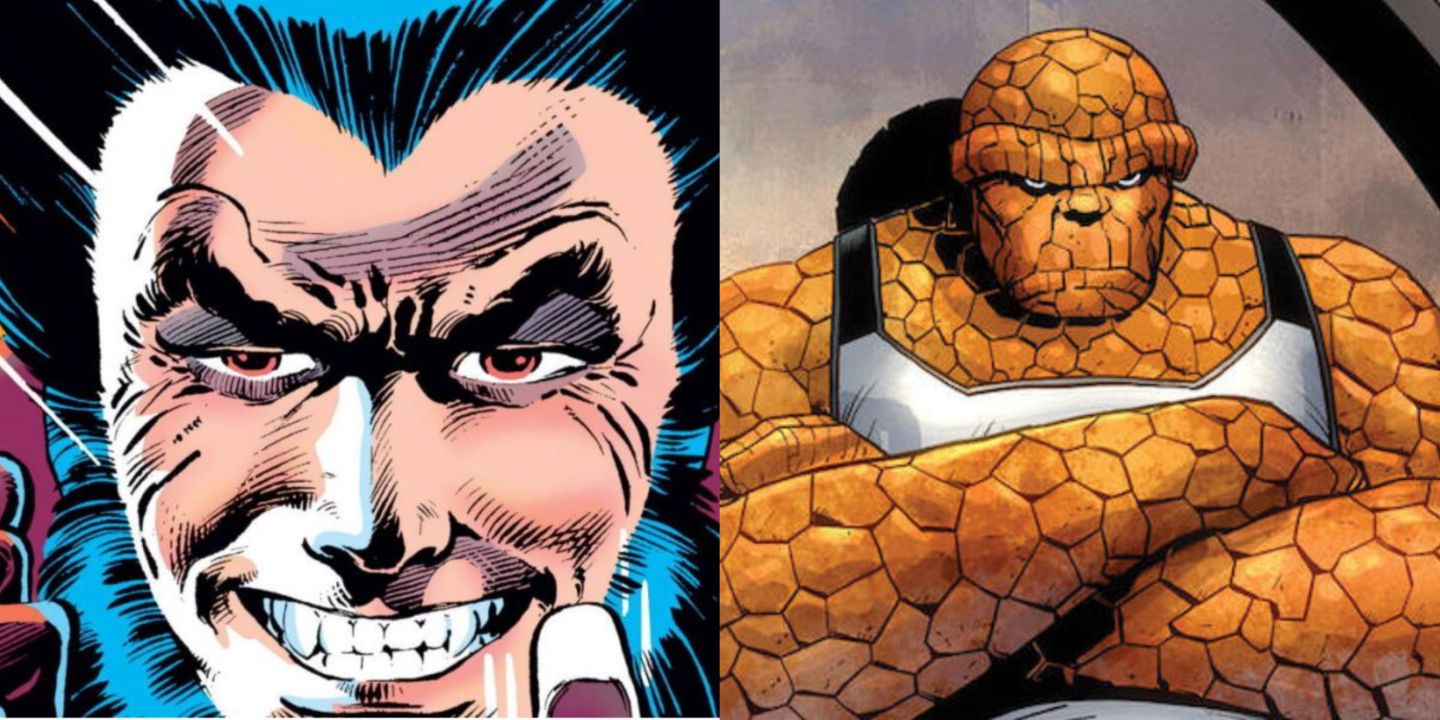
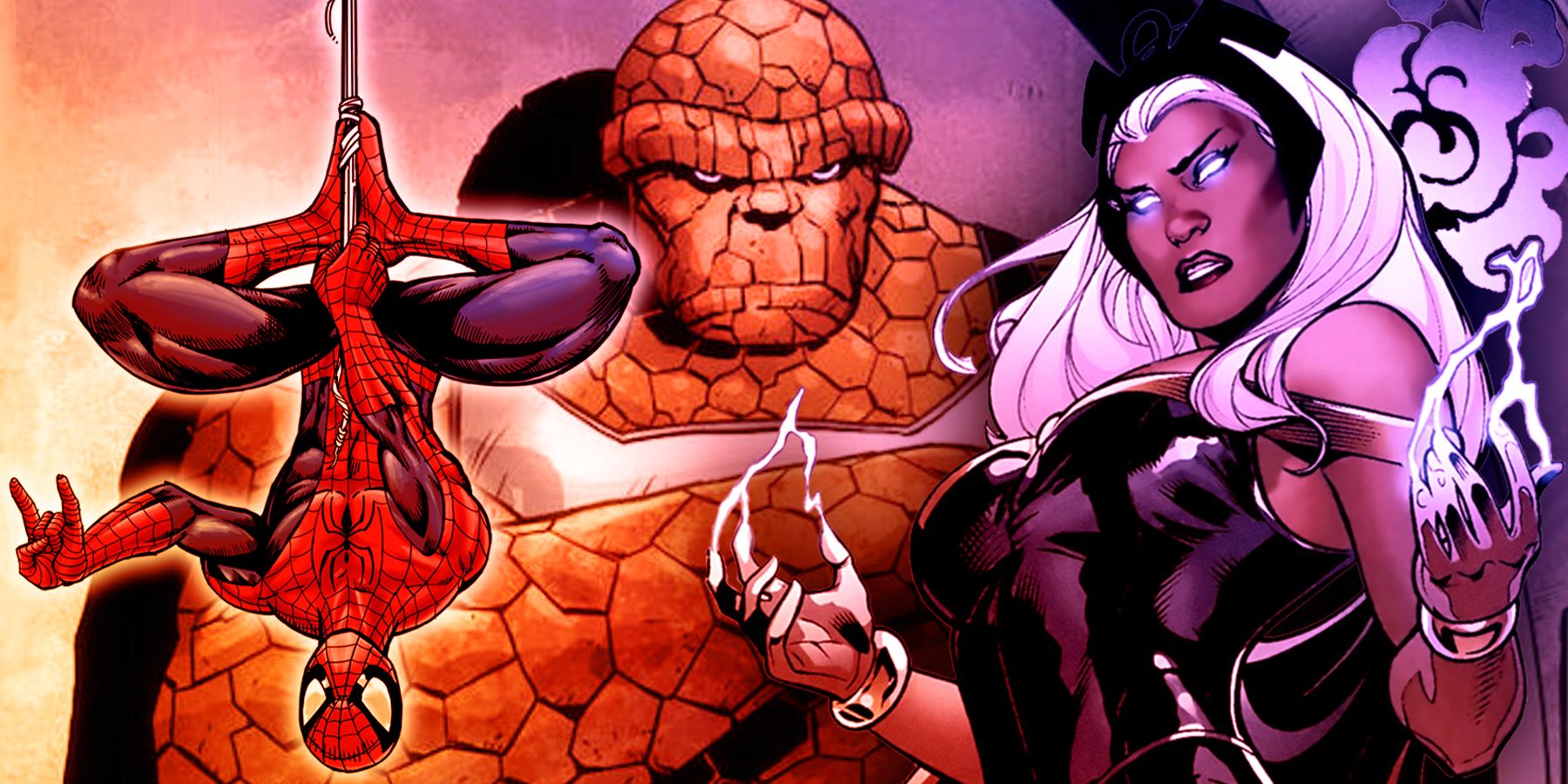
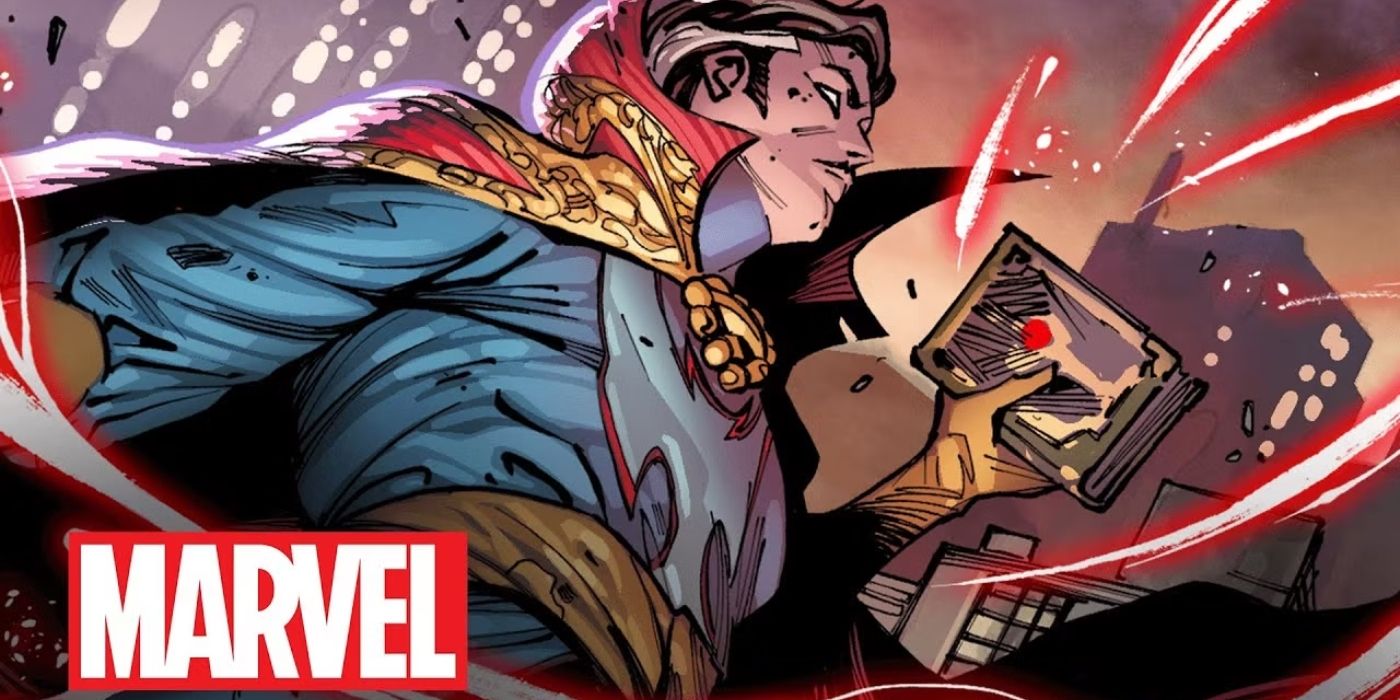



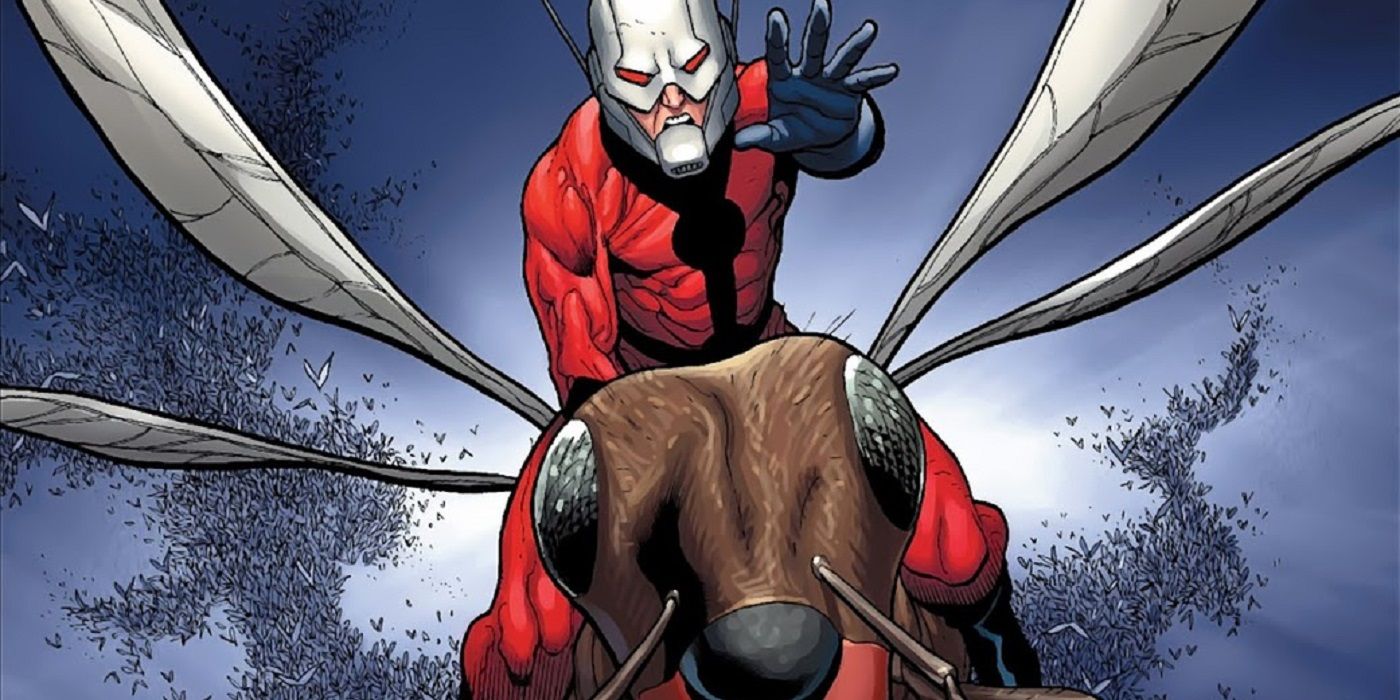
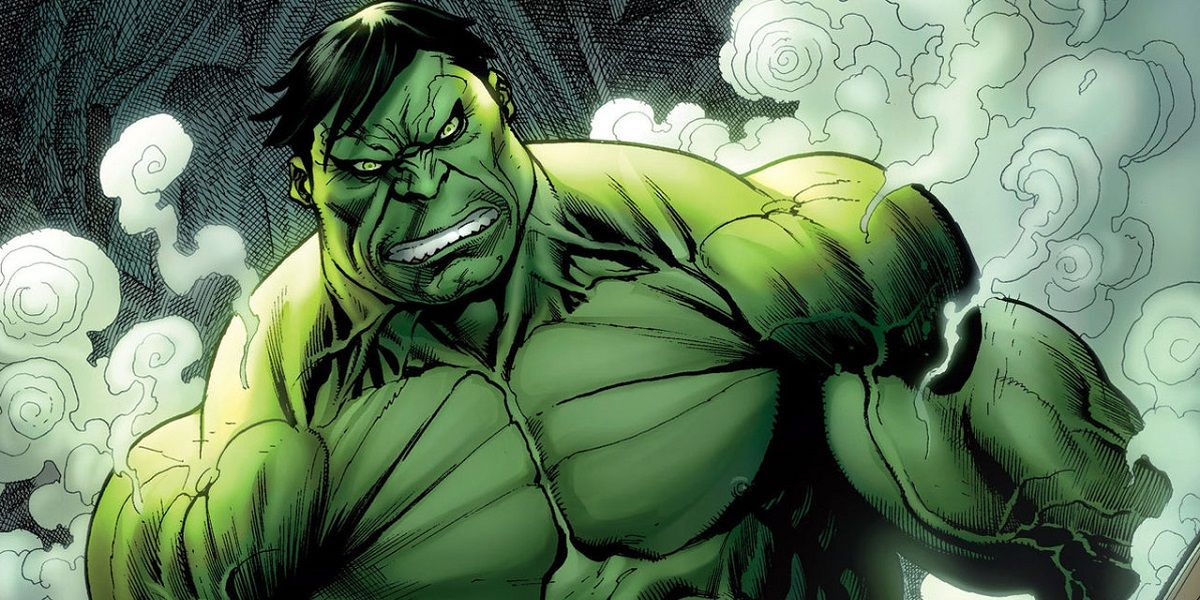

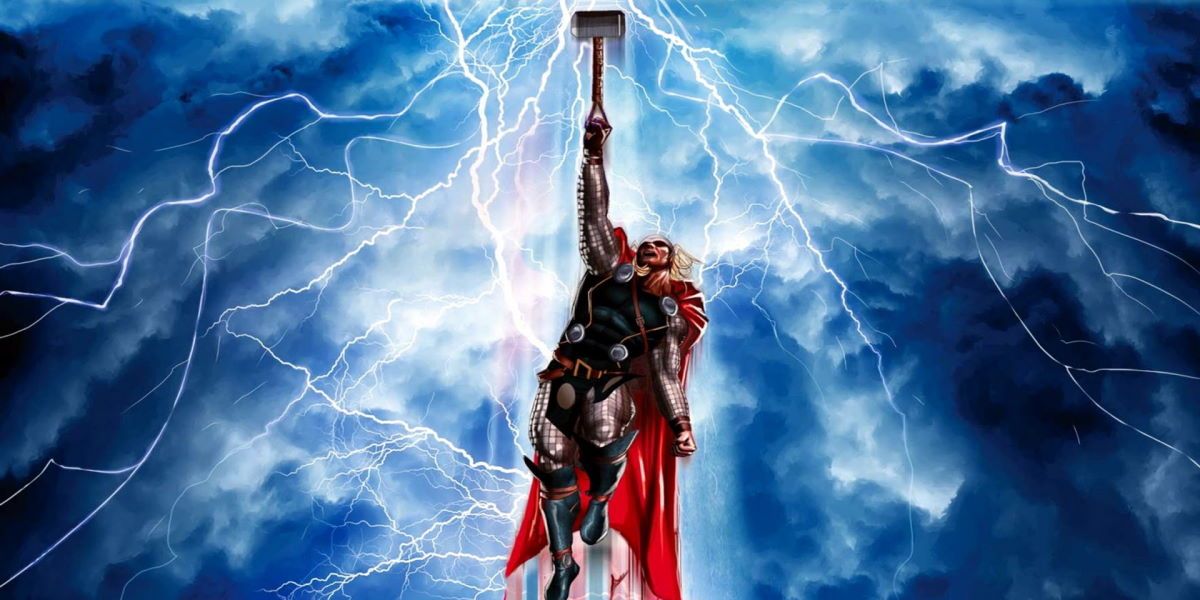
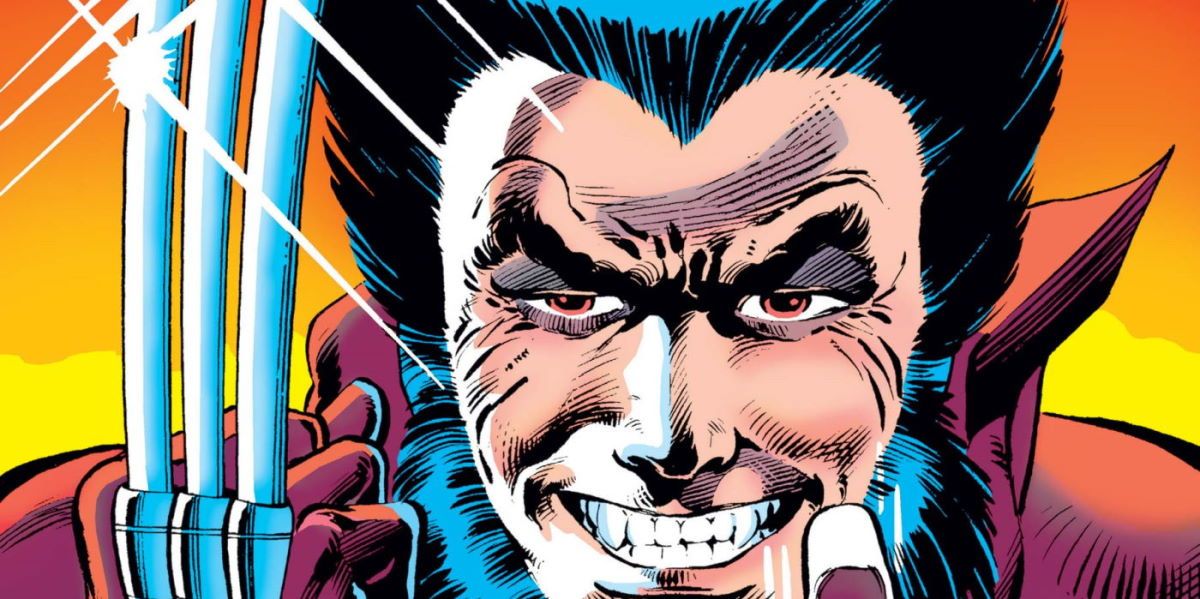
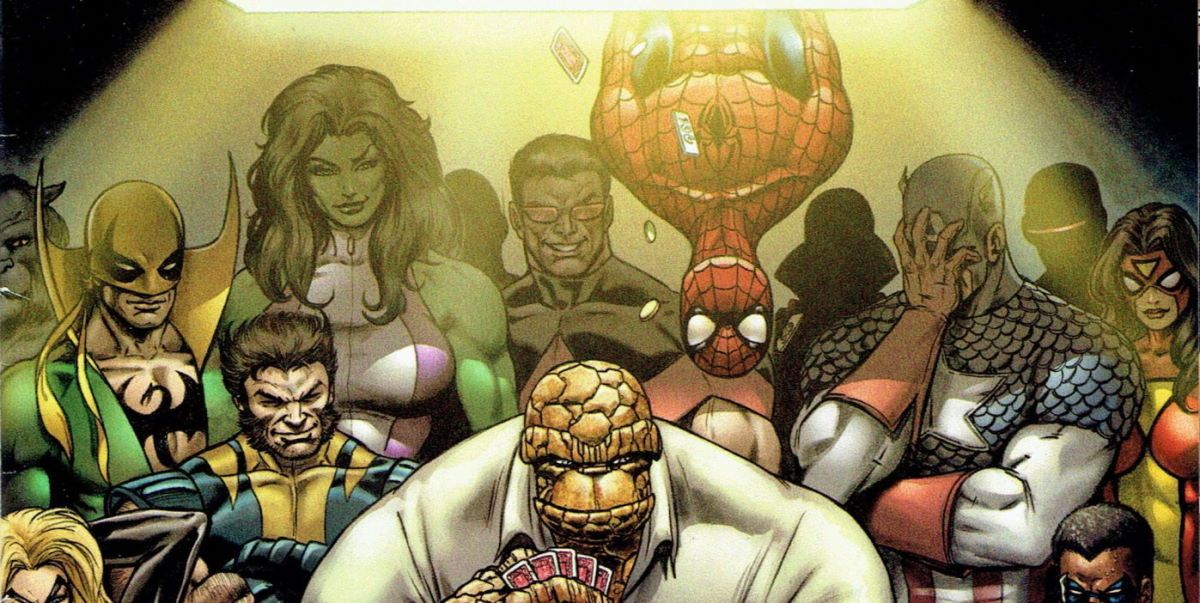
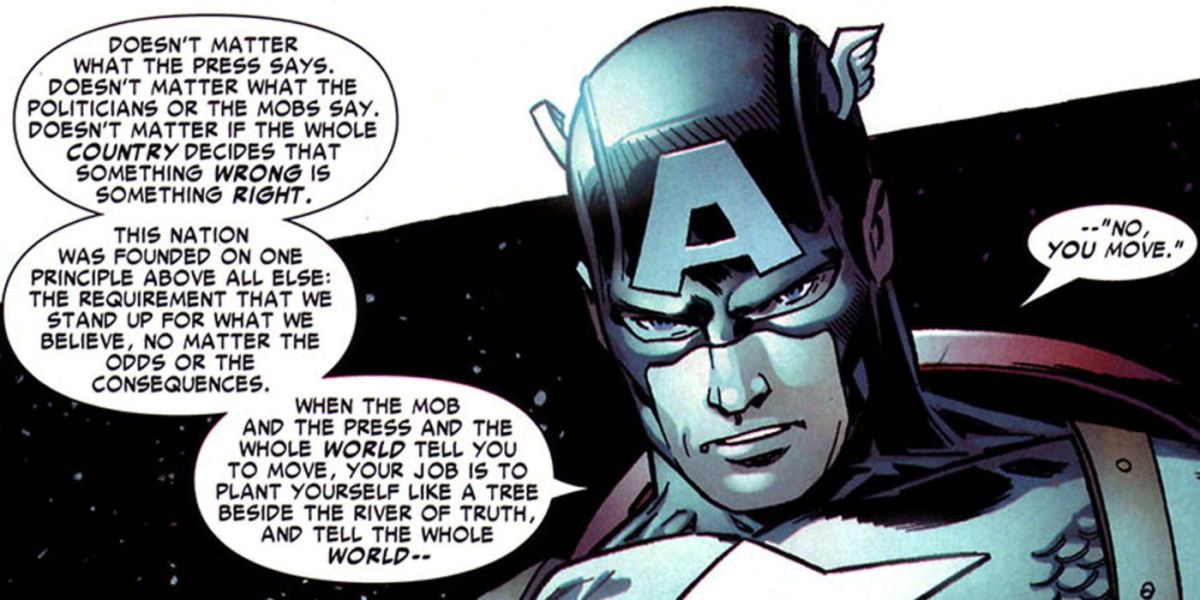
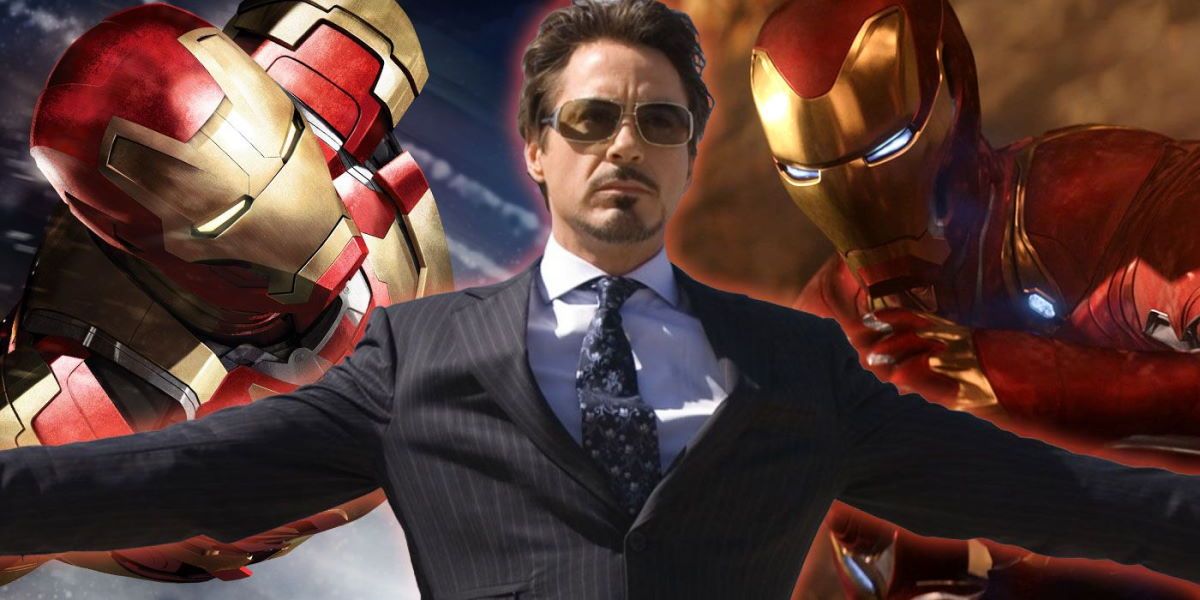
.jpg)
